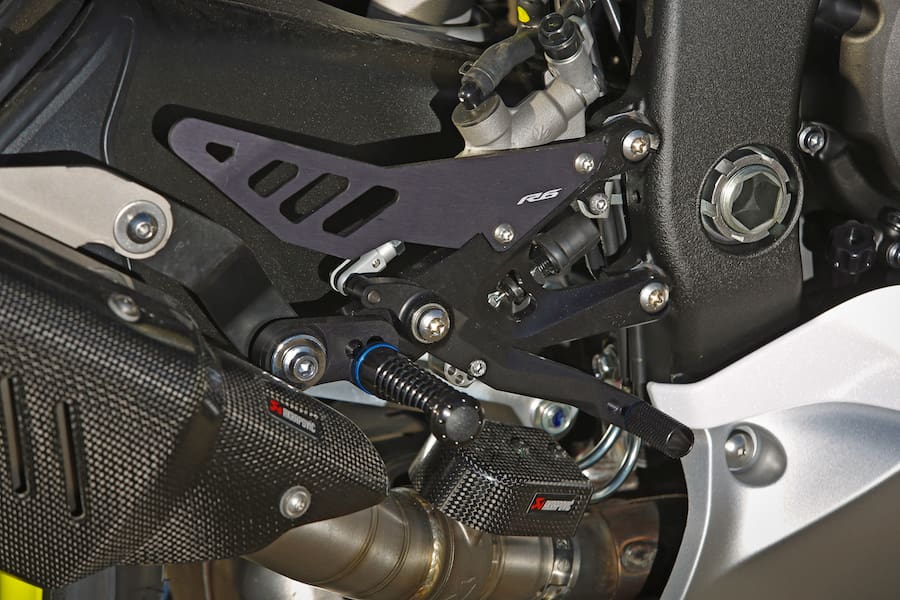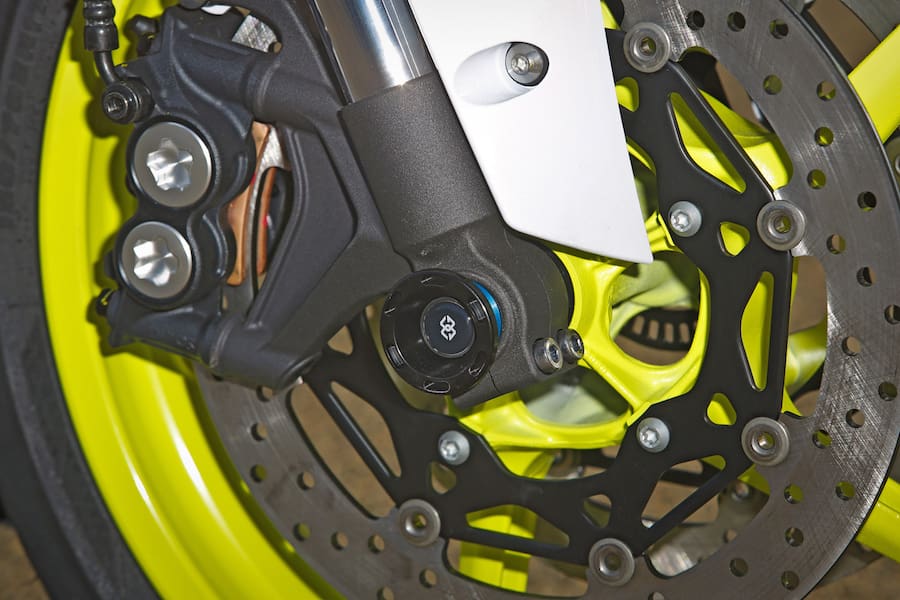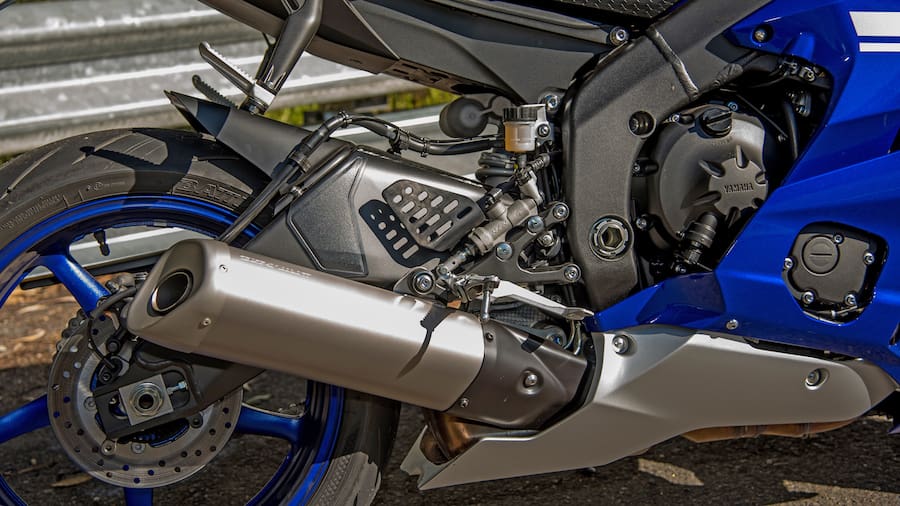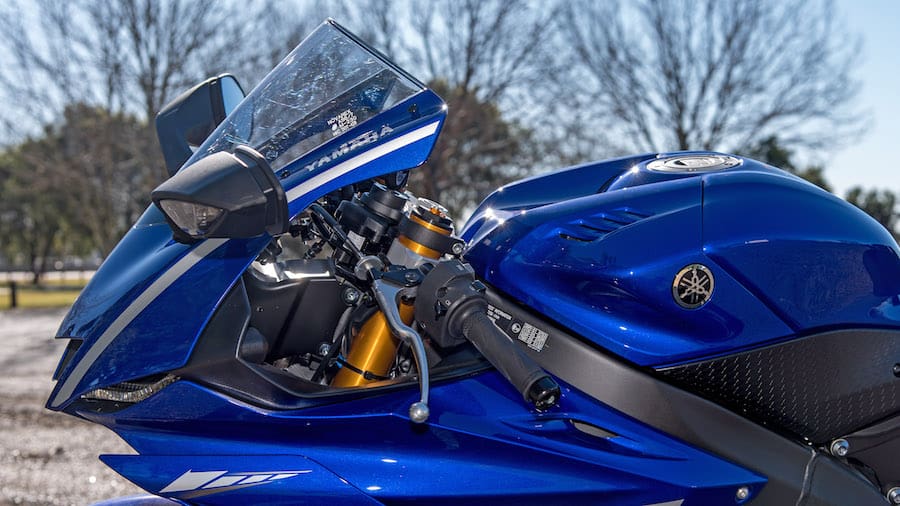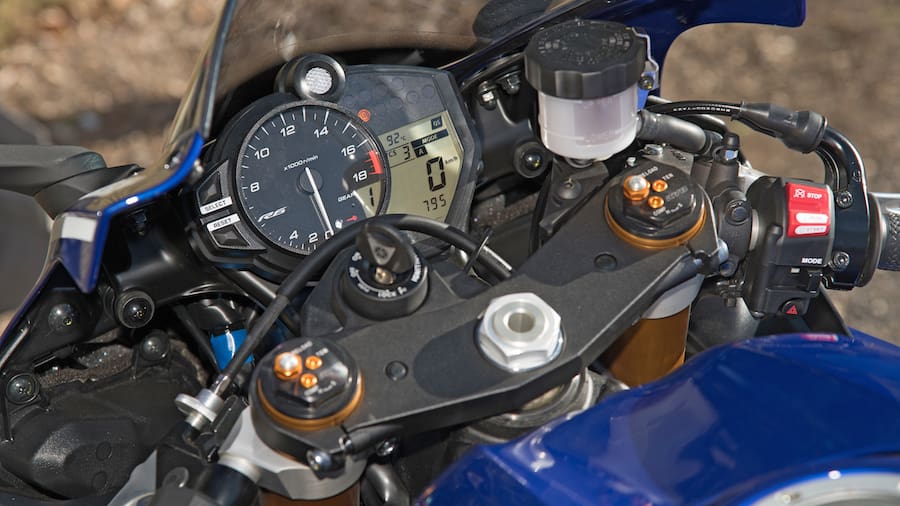Over the past decade, it looks as though the supersport market has been largely forgotten by manufacturers. While they concentrate on adding electronic safety gizmos to tame their 1000cc flagship models, the bikes in the 600-700cc range have fallen sadly out of the limelight.
Just last year this lack of interest in mid-sized class saw rumours circulate. There was talk of canning supersport racing and replacing the category, relegating the mid-capacity class to
the history books.
The Japanese certainly seemed to have lost interest. Yamaha’s YZF-R6 had not been majorly upgraded since 2006, when it gained ride-by-wire and a completely new engine. Then in 2008 a sharper-handling chassis was added. This base bike went on to dominate racetracks around the world, winning the World Supersport championship three times in that period. The R6 also had great success in Oz, accumulating many titles. In fact, it’s the current champion, thanks to Troy Guenther’s success in last year’s ASBK series. With the wins still coming, maybe there was no need for an update.
But much to our relief, Yamaha has stepped up, and decided the time is right for major revision of its mid-sized missile. But before we get on to what’s new, there’s a fair bit that’s not, so best to get that out in the open.
The frame, swingarm and engine remain the same as the old model and form the base of the 2017 version. I personally don’t have an issue with this philosophy, because the current bike is a very hard package to improve on. I know it’s exciting to read words like ‘new rods’, ‘lighter pistons’ and the like, but that’s not the case this time around.
What is the case though is that Yamaha put together a cutting-edge bike initially, that even by today’s standards sets the bar high. Its rev ceiling of 16,500rpm mated to a full titanium valve top end encased in magnesium covers still sounds futuristic. There is an EXUP valve which is controlled by the ECU to increase torque while the ride-by-wire system is metering performance and the variable intake trumpet lengths move constantly. That type of tech would be at home on any new machine, and it has all been part of the R6 for the past 10 years. And the frame and swingarm package was always one of the best in the business so changing that meant that there would be a bigger chance of going backward than forward.
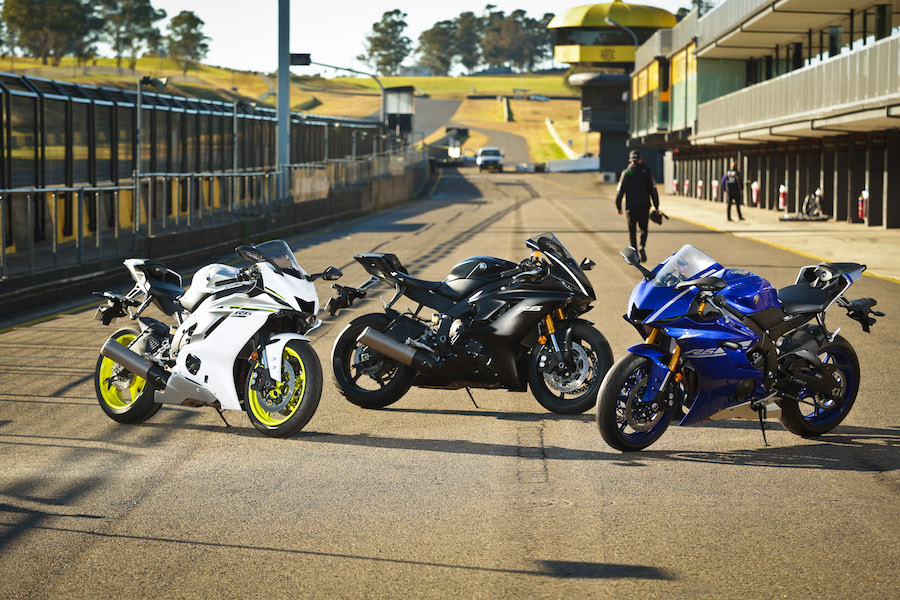
With the housekeeping out of the way we can now delve in to the goodness of the YZF – and believe me there is a lot of goodness.
We said the donk was the same. Well it is, but there’s one item that will sneakily increase performance: a lighter rotor that lets the crank spin up quicker. This was a common modification made to racebikes back when you could legally change that type of thing. Yamaha has been able to get away with it now on the standard bike because of the addition of LED lights all round, meaning less power is needed to run the electrical system, allowing smaller rotor works. Due to the more restricted Euro 4-compliant pipe, however, the 2017 R6 has slightly less performance than the old model out of the box. In de-restricted track form, that won’t be the case.
Yamaha has worked hard on changing the face of the YZF, giving it a new lease of life. With the stunning R1 chiselled from the same block as Rossi’s R1M MotoGP machine, it made sense to follow those styling cues on the 600. It’s hard now to tell the two super-siblings apart, with both looking sleek and sporty. The R6 has taken on the mid-mounted air intake system and its lines have been smoothed down considerably. The mirrors now encapsulate the LED indicators, improving aerodynamics to the point that this model has a full 8 per cent less drag to deal with.
The seat unit has also changed, being 20mm narrower at the front with that R1 styling carrying over to the rear duck tail, supported by a magnesium subframe. A lighter, differently shaped alloy tank manufactured using CMT technology replaces the old one too. This gives the rider more space to move their body weight around, improving handling even further. Overall, Yamaha has done an excellent job at disguising the older base bike – if you weren’t told, you would swear it was a completely new package.
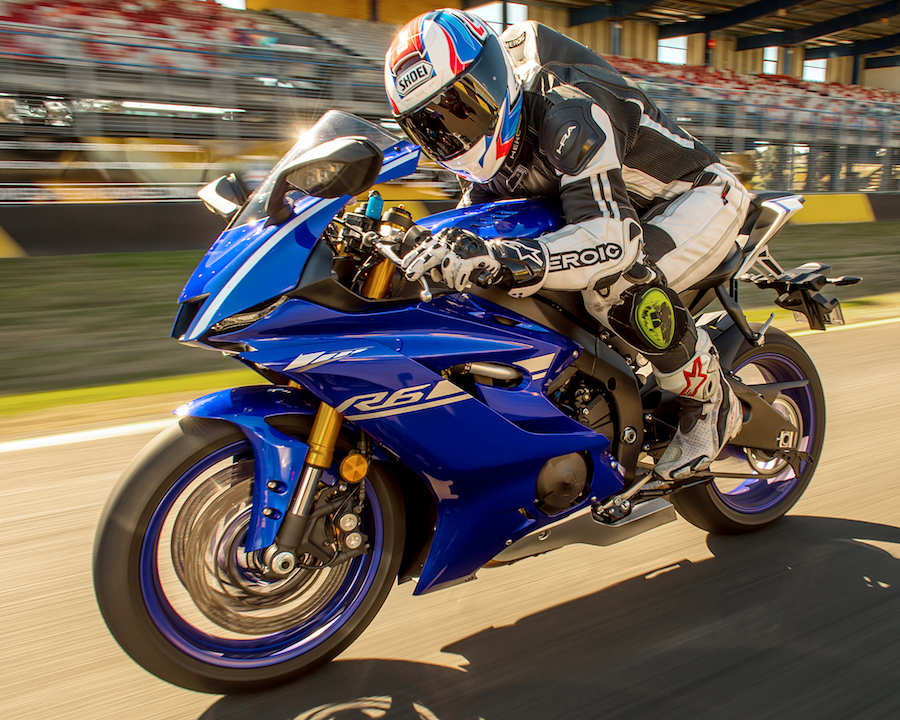
Another aspect the design crew looked at carefully was rider safety. The outgoing R6 had no rider aids at all, but now thankfully we’ve got a hamburger with the lot. Traction control is fitted with six position settings adjusted by a toggle switch on the left handlebar. It’s changeable on the fly if you close the throttle when selecting maps. There’s also the option to turn the traction control off while the bike is stationary, if you feel the need to flout the laws of physics.
Yamaha’s D-mode makes its first appearance here, with three throttle maps selectable via a thumb toggle on the right switchblock. Soft, standard and hard-hitting maps are available, and there’s a noticeable difference between them. The way this system works is very clever and only fully achievable on bikes with ride-by-wire fitted. The butterflies in the throttle bodies and the twist
grip are electronically controlled, and this allows them to open at different rates: the soft map allows a bigger twist grip opening for smaller butterfly movement; standard would be similar to a normal cable-operated throttle with one-to-one action; and the hard map is very aggressive.
A high-quality ABS system is standard equipment for the first time too, completing the updated safety package. It worked well on the road and on the track where sometimes ABS can be intrusive. It’s not possible to turn the system off without a dongle being fitted (not for road use), but for 99 per cent of punters it could stay on, such is its level of refinement.
Then there’s the fun-factor gadget, Yamaha’s QSS (Quick Shift System), which allows the rider to hold the throttle to the stop while snicking through the close-ratio six-speed gearbox. If you have never sampled this before it’s a very satisfying feeling and helps smooth the whole bike out while changing gear. No more pulling the clutch on up-shifts or blipping the throttle. It saves energy and it’s the reason that racers have had this system now since the early 2000s.

Suspension has come in for a massive upgrade this year with top-of-the-range Kayaba units fitted to the R6. The 43mm fork is straight off the R1 and is 2mm larger in diameter than last year’s item. The spec has also been revised to suit the 600 and give a more planted feel, particularly during braking and cornering. The front axle has also increased in diameter to 25mm, stiffening up the front end and giving a more direct response. As is the case on the R1, it is fully adjustable. The rear unit has also been changed with a lighter more modern Kayaba R1-inspired shock. It’s fully adjustable too and has better feeling of damping control compared to last year’s standard unit due to its up-spec nature.
The four-piston Yamaha brake calipers have been taken directly from the R1 with the front discs increasing in size by 10mm to 320mm. This has given the R6 some real stopping power, which was put to the test on our half-day track session. There was no fading whatsoever, and the lever remained firm and stable throughout my time on the bike. I had to adjust the front brake lever inwards to suit my reach and was pleased with the level of variation available. The rear brake was very good also, especially when it was working in conjunction with the ABS. It never locked, no matter how careless I was. That aspect allowed me to forget about the rear end altogether on entry and let me focus on carving the curves on the way out.
Sydney Motorsport Park was the perfect environment for this little toy. It was damp in the morning so I got a chance to feel the differences in the maps and modes – and they were dramatic. With the soft throttle map and traction set to five my safety margin doubled. I could feel the torque transferring to the tarmac and at the same time the deliberate intervention of the rider aids telling me I was okay. On the damp morning track the bike handled just right too, transferring the weight from front to rear as it should and giving me good feedback and feel through the ’bars. It steered exactly where I wanted it to go and the OEM Bridgestones backed that up.
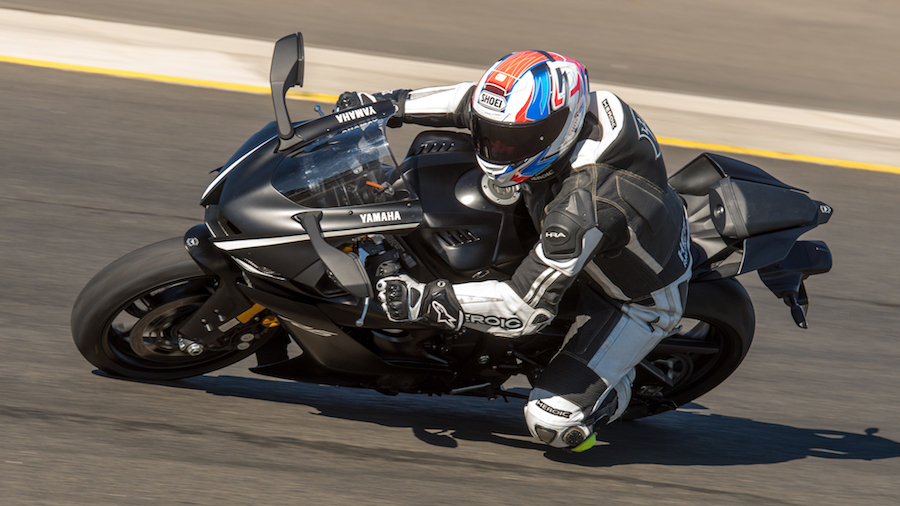
As things dried up and my speed increased I altered the D-mode mapping to standard and the traction setting to number two. The quality of the software is very good and even though the R6 doesn’t have an IMU it worked just like a racebike, retarding the ignition in a smooth way to dull the power off rather than cutting abruptly.
As the speed increased, it was obvious the rear spring was set too soft as the front was starting to get a flighty feeling about it exiting the faster drive corners at SMSP. I pitted and upped the rear preload a couple of turns and instantly the R6 responded with that perfect handling again, just at a faster pace. The bike’s strong point was the way it let me keep my corner speed up and rail through a turn with less skill than it normally should take. Its soft linear power is friendly to use and doesn’t bite, but if you keep the revs above 13,000rpm things get busy quickly. This R6 rewards the pilot with a normally unfound speed and is not only a great choice of machine to win an Australian championship but is a great bike to learn on because of its kind manners. I guess that’s the key right there –it’s an easy bike to ride fast and even though it likes lots of revs it doesn’t feel like it wants to hurt you, rather become your best friend.
I didn’t want the day to end and although I would probably be a superbike customer rather than a supersport guy, I came away thinking I would love to have one of these sitting in the shed. It’s got the looks and performance that are expected of a bike of its calibre.
This update hasn’t been a half-attempt by Yamaha to eke a couple of extra years from the model line. The changes made have lifted the R6 up a level by retaining a lot of the good points of the old bike and fixing complaints or improving weaknesses from the past. If it ain’t broken, don’t try to fix it is a good rule to live by, and one that we see even in MotoGP where riders like Rossi sometimes prefer the old frame or engine over the new development. The R6 slots in to that category this time round and it’s going to be hard to beat well into the future.
New key features
Next generation R-series design
Iconic R1-inspired face
Better aerodynamics
Six-level traction control system
Quickshifter for full-throttle clutchless upshifts
43mm R1-type fork with R6-specific settings
320mm diameter R1-type front brakes with radial four-pot calipers
Slimline magnesium rear subframe
New angled seat
Lightweight aluminium fuel tank
Enhanced riding position
ABS
Euro 4 compliant
D-Mode
Technical highlights
Forged aluminium pistons
Titanium intake/exhaust valves
Air Induction System and Yamaha Chip Controlled Intake (YCC-I)
Twin-injector Yamaha Chip Controlled Throttle (YCC-T)
Slipper clutch
Close-ratio six-speed transmission
Magnesium head and case covers
EXUP valve
Titanium silencer
Aluminium frame and swingarm

Test Steve Martin
Photos Half Light Photography
